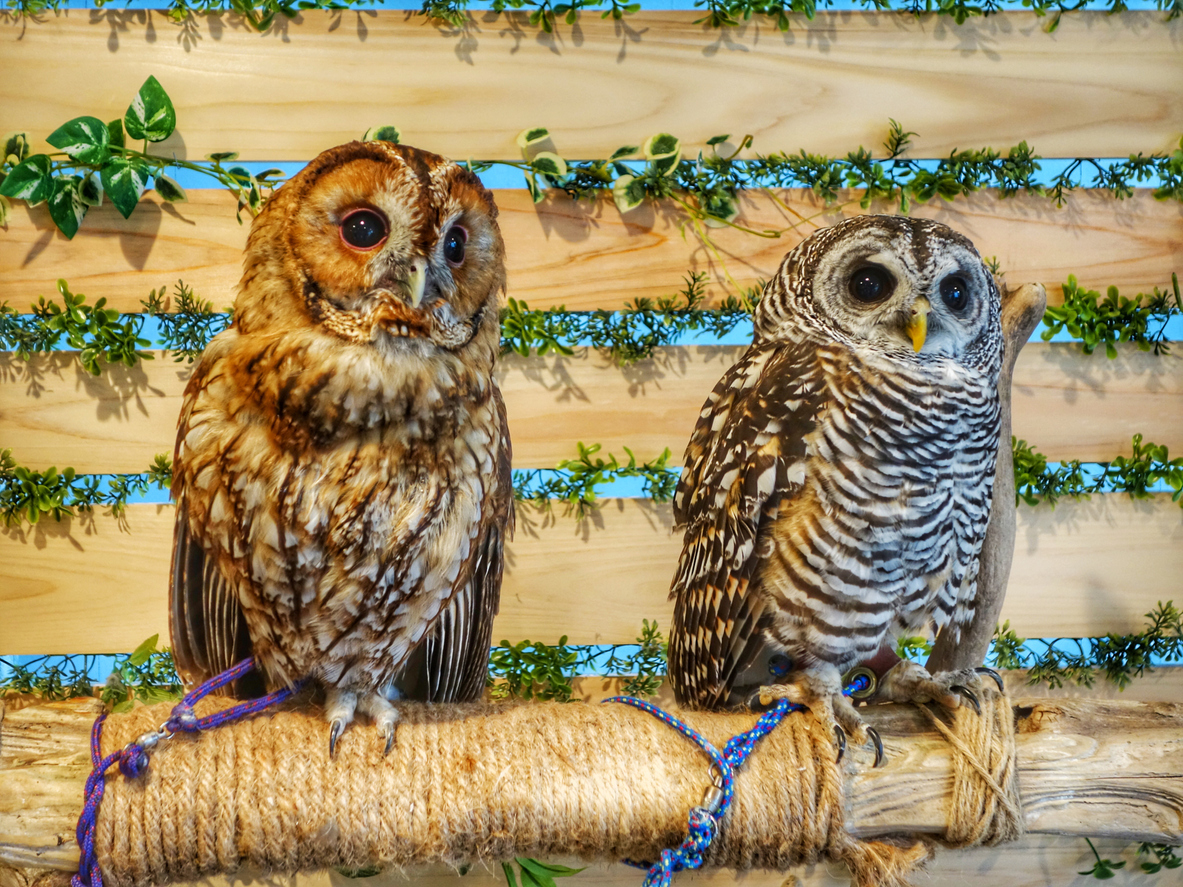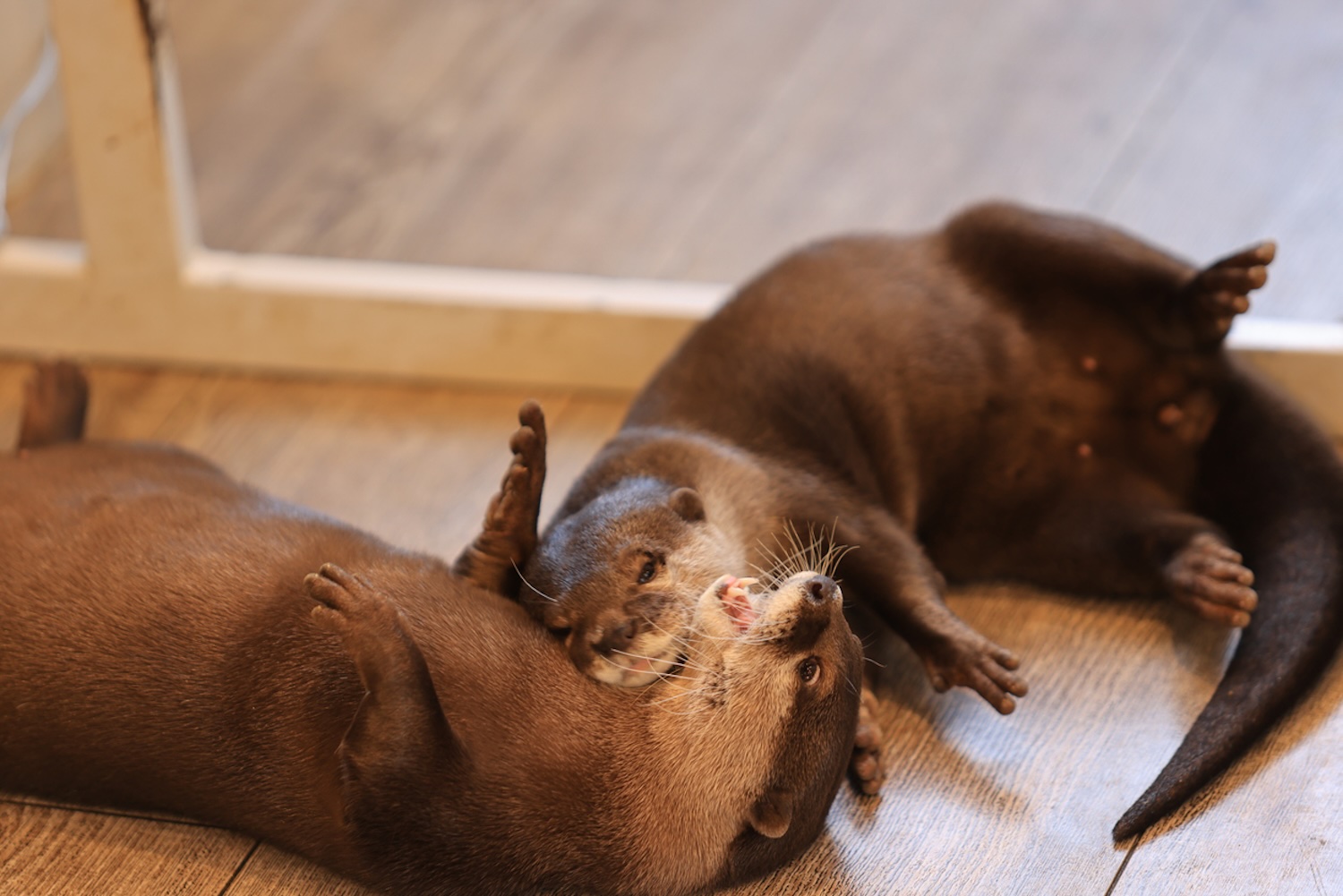It is not hard to see why people visit animal cafes in Japan. Animals are cute. Owl lovers want a close-up experience. Capybaras look so unbothered that you can imagine they’re enjoying the attention. But put yourself in the animal’s place.
You’re confined, under bright lights, handled by a stream of strangers for hours. I can barely stand five minutes of small talk with one stranger, let alone being grabbed and posed by dozens.
The reality is, there are many reasons why you shouldn’t visit an animal cafe in Japan — horrible conditions, neglect, disease, stress and even connections with organized crime. It gets to a point where you either don’t know how bad it really is or just don’t care about the suffering of animals.
If you didn’t know how harmful these places can be and were thinking of going on your next trip, here’s what actually happens behind the scenes at animal cafes in Japan.
The Ethics of Animal Cafes
Dumb Arguments For Animal Cafes
A Lot of Dead Owls
Health and Hygiene Is What You’d Expect
Why Are Animal Cafes Popular?
Where Do Cafes Get Their Animals?
Exotic Animals Are Often Smuggled
Private Zoos Are Hell
Cruelty-Free Alternatives
Final Thoughts
The Ethics of Animal Cafes
Owls are the forest’s wizards. They have pinpoint hearing, silent flight and eyes that find you in the dark. They’re built for night. Now picture that animal tethered to a box under fluorescent lights, pupils blown wide, flinching as hands keep coming.
In cafes, birds denied flight and dark refuge slide into stress behaviors — feather-plucking, pacing, and tremor s— and it’s not just owls. Practically any animal exposed to bright lights and crowds is going to experience stress.
Animal cafes turn living creatures into props — guaranteed access, crowds, petting and posing. That isn’t “cute,” it’s deprivation. The animal’s needs (sleep cycles, space to move, choice to retreat) come after the customer’s experience. Even cats, which put up with us at best, are constantly on rotation — either on the floor for your entertainment or in the back, locked in a cage.
Dumb Arguments For Animal Cafes
I always hear, “You eat meat, so you’re no better.” That’s what we call “whataboutism,” and it’s what my daddy calls “malarky.” Whether you eat chicken has no bearing on whether confining wildlife under strip lights for paid handling is wrong. Factory farming is horrific. It’s a flaw we should fix, but it doesn’t give license to cause a second harm.
Another dumb trope is, “They’re better off here.” Based on what—the vibes? What makes you think the kid working an arubaito (a part-time shift) is an otter expert? He learned latte art last week; now he’s diagnosing semi-aquatic stress behaviors next to a McDonald’s.
Sure, my cat is “better off” — because he’s one animal, and basically my son, not inventory. I’m not optimizing “units of affection per hour.” In animal cafes, the animal is the product. If it gets sick or stressed, you swap it out to keep the queue moving. That’s not care, that’s capitalism. That means customer expectations first, margins second and the animal last.
A Lot of Dead Owls

Animal cafes say they give their animals “rest,” essentially a break, as if they are on the clock. In reality, that “rest” is nothing more than going into a small box or cage next to the Nespresso machine while the next animal is churned out for entertainment.
According to a former owl cafe employee, even owls “resting” were exposed to people. At their cafe, at least seven owls died in a single year. Others had breathing problems and went untreated until they collapsed. And the owner simply “supplemented the stock” by buying new ones.
“At the beginning, the owner of the shop just sat back and let them die without veterinary treatment,” says the whistleblower. “During business hours, they prioritized business. After so many owls died, they finally took [one] sick bird to a veterinarian.”
Of course, a train of shoeboxes leaving the cafe would look suspicious, so the owners simply buried the poor animals “in a space at the back of the shop.”
Health and Hygiene Is What You’d Expect
A survey by WWF Japan and Hokkaido University tested 25 exotic animal cafes (owls, otters, etc.) and found multiple hygiene problems, including E. coli in four cafes and Salmonella in two. Some cafes lacked proper hand-washing stations or failed to require guests to sanitize after touching animals. The study warns that these are just the tip of the iceberg.
This isn’t surprising, seeing as the same whistleblower from the owl cafes says the same sink where quails and mice were prepped for the owls to eat was also used to prepare customers’ drinks. I bet you weren’t expecting that premium flavor in your latte.
Why Are Animal Cafes Popular?

Image: iStock
Japan’s first cat café opened in Osaka in 2004, and Tokyo followed in 2005. The industry boomed and cafes quickly spread across Japan, exploiting rabbits, penguins, otters, pigs, reptiles and other animals.
In Japan, many rentals ban pets. Homes, especially in Tokyo, are small and keeping an animal is costly. Thus, animal cafes offered a proxy for people who couldn’t keep pets at home. It soon became a popular activity with tourists. The whole idea of an animal cafe has sort of been conflated with Japanese culture. Indeed, despite starting in Taiwan, animal cafes have become a “quirky part” of the Japanese experience.
Today, Japan has roughly 16 million pet cats and dogs — more than the number of children under 15. Pets are increasingly treated as family; even Buddhist-style memorials and funerals are common. Shelters have improved dramatically over the past decade. The number of dogs and cats culled fell from 128,241 in 2013 to 23,764 in 2020 and has continued to decline.
However, despite shifting attitudes about pets, animal cafes still persist, especially with exotic animals, and thanks in no small part to inbound tourists. For some stores, 60% of customers come from overseas.
Where Do Cafes Get Their Animals?
Click here to read more.
External Link
https://gaijinpot.com/
© GaijinPot


AloJapan.com